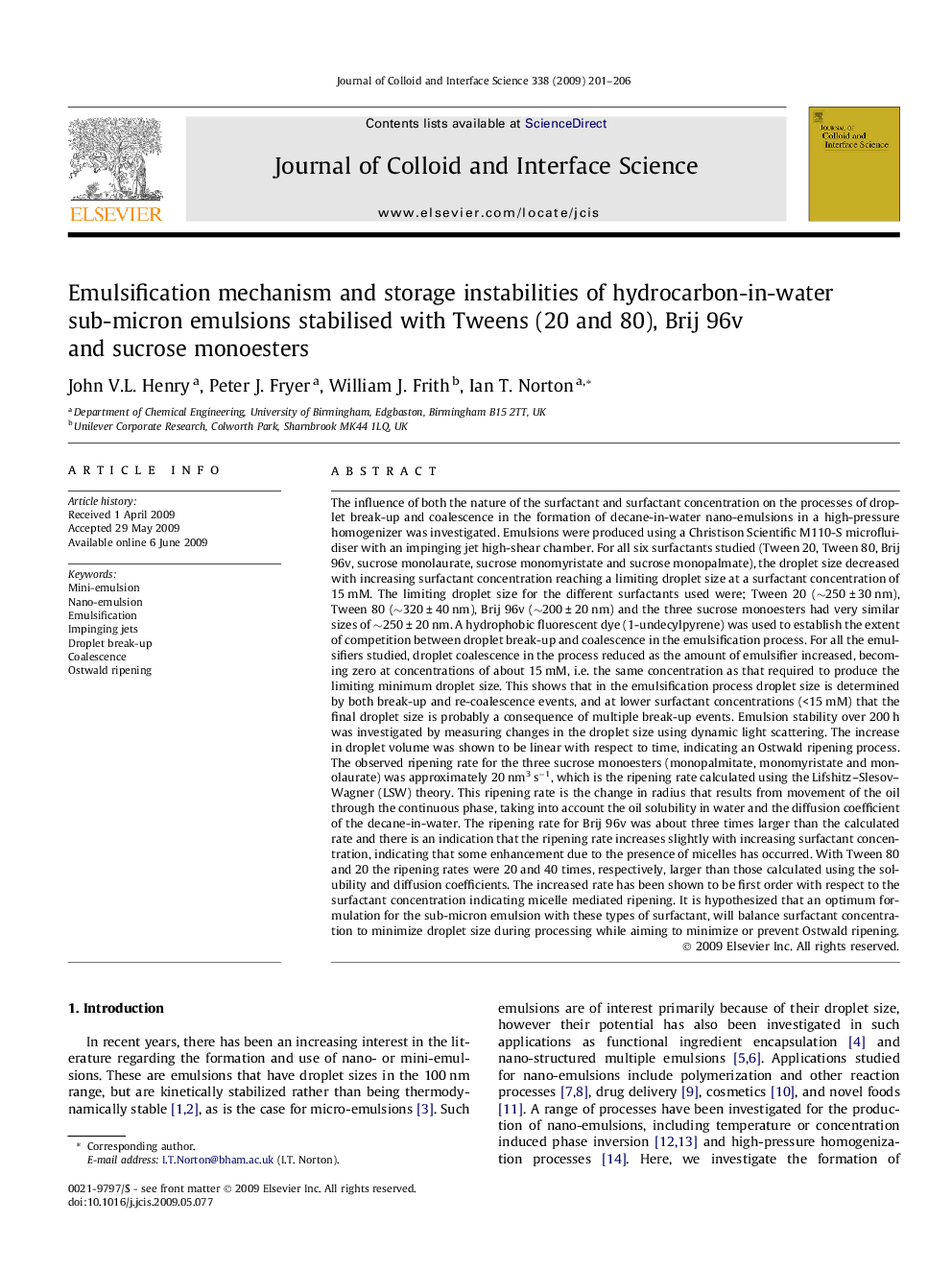| Article ID | Journal | Published Year | Pages | File Type |
|---|---|---|---|---|
| 610073 | Journal of Colloid and Interface Science | 2009 | 6 Pages |
The influence of both the nature of the surfactant and surfactant concentration on the processes of droplet break-up and coalescence in the formation of decane-in-water nano-emulsions in a high-pressure homogenizer was investigated. Emulsions were produced using a Christison Scientific M110-S microfluidiser with an impinging jet high-shear chamber. For all six surfactants studied (Tween 20, Tween 80, Brij 96v, sucrose monolaurate, sucrose monomyristate and sucrose monopalmate), the droplet size decreased with increasing surfactant concentration reaching a limiting droplet size at a surfactant concentration of 15 mM. The limiting droplet size for the different surfactants used were; Tween 20 (∼250 ± 30 nm), Tween 80 (∼320 ± 40 nm), Brij 96v (∼200 ± 20 nm) and the three sucrose monoesters had very similar sizes of ∼250 ± 20 nm. A hydrophobic fluorescent dye (1-undecylpyrene) was used to establish the extent of competition between droplet break-up and coalescence in the emulsification process. For all the emulsifiers studied, droplet coalescence in the process reduced as the amount of emulsifier increased, becoming zero at concentrations of about 15 mM, i.e. the same concentration as that required to produce the limiting minimum droplet size. This shows that in the emulsification process droplet size is determined by both break-up and re-coalescence events, and at lower surfactant concentrations (<15 mM) that the final droplet size is probably a consequence of multiple break-up events. Emulsion stability over 200 h was investigated by measuring changes in the droplet size using dynamic light scattering. The increase in droplet volume was shown to be linear with respect to time, indicating an Ostwald ripening process. The observed ripening rate for the three sucrose monoesters (monopalmitate, monomyristate and monolaurate) was approximately 20 nm3 s−1, which is the ripening rate calculated using the Lifshitz–Slesov–Wagner (LSW) theory. This ripening rate is the change in radius that results from movement of the oil through the continuous phase, taking into account the oil solubility in water and the diffusion coefficient of the decane-in-water. The ripening rate for Brij 96v was about three times larger than the calculated rate and there is an indication that the ripening rate increases slightly with increasing surfactant concentration, indicating that some enhancement due to the presence of micelles has occurred. With Tween 80 and 20 the ripening rates were 20 and 40 times, respectively, larger than those calculated using the solubility and diffusion coefficients. The increased rate has been shown to be first order with respect to the surfactant concentration indicating micelle mediated ripening. It is hypothesized that an optimum formulation for the sub-micron emulsion with these types of surfactant, will balance surfactant concentration to minimize droplet size during processing while aiming to minimize or prevent Ostwald ripening.
Graphical abstractComparison of ripening rate for a range of surfactants as a function of surfactant concentration and the starting droplet size.Figure optionsDownload full-size imageDownload as PowerPoint slide
